With Arturo’s in Maplewood a smash success, chef Dan Richer takes his dough on the road to Jersey City
Razza
275 Grove Street, Jersey City. Phone: 201.356.9348
Open Monday through Saturday from 5:30 to 10 p.m. All major credit cards accepted. No reservations are taken. Small plates and salad range in price from $4 to $14. Pizzas are $12 to $18.
It’s late afternoon at Razza, where the art and science of flour and water converge and judgment is pronounced every day at this time.
Dan Richer, bread maestro, is removing 18 loaves from his wood-fired oven at the rear of Razza Pizza Artigianale on Grove Street in Jersey City. They are sizable loaves, but there are just 18. That’s all he bakes any day Razza is open. There’s a deja-vu to his explanation of why: “That’s what fits in my oven. We can’t do a second batch because the oven temperature wouldn’t be right and the bread wouldn’t be right. So when we run out, that’s it.”
This all merits thought, but the nose is ruling. And Richer is talking about his “10 Points for Properly Baking Bread” as he checks each loaf. Yes, it’s cooked all the way through. It’s firm and crisp on the outside.
There are big holes in the crumb. There’s no tunneling. There are ears.
Ears? Yes, Richer says. Ears.

All photos courtesy of Razza
“Every loaf needs an ear. You can pick up a loaf by an edge that rises on the top of a loaf.” He points to one loaf that lacks a proper edge. A problem with the scoring—a slash—made just before the loaves were paddle-carried into the oven. The angle of the slash? The depth of the slash?
Richer is picking up his loaves by their ears, inspecting each one. The vast majority of the 18 loaves have ears in tune with the baker’s carefully orchestrated ritual that consumes a good part of the day at Razza and has consumed the life of the man who shuns the word chef to describe his occupation and smiles, proudly, as he says, “I’m a craftsman.”
Meanwhile, the Razza front-of-the-house team—all of whom had to score 90 or better on a 15-page exam—is gathering at a table to go over the night’s specials. They include a new cocktail, “The Martinez,” which actually is an old cocktail born in California in the 1840s. It’s nigh on showtime, and people are lined up at the door of 275 Grove. They know where they want their bread buttered.
In the beginning
If the name Dan Richer sounds familiar, if the passion, focus and intense pursuit of authentic and correct is something you’ve experienced not in Jersey City, but a little closer to home, then you likely know Arturo’s, the epicenter of soul-satisfying Italian food and pizza in Maplewood. Arturo’s is also owned by Richer, and Razza is the place Arturo’s spawned.
Years ago, Richer bought the longtime suburban pizza spot, but added his own bill of fare—notably a market- and season-driven tasting menu that drew national attention and garnered Richer a spot on the list of candidates for Rising Star Chef of the Year from the James Beard Awards. But he kept working on his pizza, which was head and shoulders above the then-growing pack of pizzaiolos, though not at the level of the best pizza-maker on the planet, New Jersey’s own Anthony Mangieri.
Then, one day, after hearing about Richer, Mangieri “came in for a pizza,” Richer says.
“At that point, I was focusing more at Arturo’s on the tasting menu, the pasta-making, the rabbit-cooking. When he came in, I was so embarrassed by my pizza-making that I knew I had to get better. That visit gave me a new direction.”
A direction that took him to Jersey City, to build Razza.
Richer started studying, reading bread books, delving into the science of fermentation. He reels off the names of bakers who influenced him—from the French professor Dr. Raymond Calvel, who wrote the seminal “The Taste of Bread,” to the American author, theologian, lecturer and restaurateur Peter Reinhart—and talks of years of trials and errors.
 “In pursuit of making great pizza,” Richer says, “I learned how to make great bread.”
“In pursuit of making great pizza,” Richer says, “I learned how to make great bread.”
Inspiring Minds
Dan Richer is all about learning. He studied Japanese cuisine and, in 2005, found Sushi Yasuda on East 43rd St. in New York. Those who worship purist theologies in cuisine know Naomichi Yasuda as the best sushi chef.
Richer agrees. It was Naomichi Yasuda’s words, spoken as he served forth his fishes to Richer at his restaurant, that made the younger chef see the correlations between fish and rice and bread and butter.
“I had the same feeling with Yasuda’s sushi as I did with Anthony’s pizza: It was the rice that did it for me. What Yasuda explained to me so well was the element of time and temperature, of different fishes at different temperatures, of eating one piece at a time because only at that precise moment are both the fish and the rice at the perfect time and temperature. It has to be done at the last second and has to be eaten right away.
“When I started making the bread and the butter, I realized they, too, couldn’t be perfect if the bread was too hot or too cold or the butter too hot or too cold. That level of seriousness is something we take to our bread and butter. I take so much inspiration from Chef Yasuda.”
So much so, that when Naomichi Yasuda left his New York restaurant to the care of his sushi-chef lieutenants and went to Japan to open a minuscule temple to sushi, Richer made a point of traveling to Japan to eat there. He found Yasuda in his element—and at the height of his craftsmanship.
 He is sitting in the dining room at Razza, where he has just finished shaping his dough into the now-iconic Razza shape that resembles a French batard. He glances over at the loaves, resting in individual linen-lined baskets. He consults with Octavio Gadea, who works with him on the bread. Then he continues.
He is sitting in the dining room at Razza, where he has just finished shaping his dough into the now-iconic Razza shape that resembles a French batard. He glances over at the loaves, resting in individual linen-lined baskets. He consults with Octavio Gadea, who works with him on the bread. Then he continues.
“The thing that makes Anthony’s pizza better than anyone else’s is the dough. When you walk into his restaurant, you can smell it. It’s the dough. The essence and soul of pizza is fermenting dough.” True. Be it at Mangieri’s first Una Pizza Napoletana in Point Pleasant Beach, N.J., or the second, on East 12th Street in Manhattan, or the current Una Pizza, in San Francisco, the dough’s been the thing.
As Richer read and worked and experimented, his processes matured. He realized the key was in the fermentation. “I started fermenting everything I could; you come to understand how fermentation is controlled, how to make beneficial bacteria that out-perform the harmful bacteria.
“Innately, as humans, we’re meant to ferment. That became clear to me. It took me out of cooking and into something more like a craftsman. I feel more akin to an ironworker or a cabinet-maker than a chef. You need to understand iron, or wood, and once you understand it, you can put it back together the way you desire. The same is true with flour and water.”
When Richer says he started fermenting “everything,” he isn’t kidding. Pickles, sure. Yogurt, cheese, crème fraiche, naturally.
Then came butter. It was the natural partner for Richer’s bread which was, finally, getting to the level that made him feel good about serving it to his diners. Richer’s butter couldn’t be merely like any other premium butter, not even hyper-priced imported French butter or the good, truly good, cultured butters now sold in supermarkets. Richer’s own butter is made from cream that comes from cows pastured on a dairy farm in Pennsylvania. This dairy-farming family makes small batches of yogurt and saves the cream that rises to the top for Richer. When he speaks of that cream, the craftsman gets a little poetic.
“There’s a week in April when the cream changes,” Richer says. “There’s a time when the cows eat onion-grass and you can taste it in the cream. I love to celebrate the seasonality of our own butter. What’s the fun if it doesn’t taste different? It’s such an amazing cultured product.”
It’s what the denizens are waiting for: Razza’s bread-and-butter course.
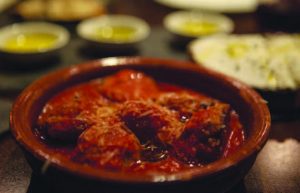 Razza Right Now
Razza Right Now
Before Richer took over the space, 275 Grove had been, in long succession, a bar, a wine store, a popcorn store and, way, way before, The Majestic Theater and a home for vaudeville. It is smaller than Arturo’s. Razza’s kitchen is tiny and much cooking, baking and prep work is done at the rear of the dining space, offering diners a bit of culinary theater. That suits Richer’s mission just fine: “Since our space is smaller, we focus more. That means, if we only do five things, we have to do them very well. On the surface, we look like another wood-fired pizza restaurant. Sometimes it seems like we’re nit-picking. But it’s the details that separate us.”
 Let’s Eat
Let’s Eat
First, the bread. It tastes at once nutty and then, faintly, of rye. This never dominates the palate, but scents the mind with its nuance. There’s not just a single texture to the bread, but multiple textures, from the top crust to the bottom crust—and, oh, are they ever different—to the interior crumb, with its own layers of varying textures, particularly around the holes. The initial slice is gone before you have a chance to delineate all those layers.
So you take another slice, this time remembering the butter. The butter, at once beguilingly earthy-gamey and lushly creamy, has a natural salinity that can become elusive if you go too bonkers on the texture thing. I was into my third slice before I smacked myself for over-thinking. I started eating the butter straight, talking myself into believing it’d be a kind of palate-cleanser. Then came the stracciatella, the only thing that could get me to stop eating the butter.
Razza’s special salad that day was centered around minutina, a green that’s grassy in appearance, verdant and almost juicy in flavor. Its inherent sweetness proved an irresistible counterpoint to slivers of wild mushrooms, most importantly maitakes. There’s the barest splash of balsamic vinegar and exquisite olive oil to help fuse the greens and mushrooms.
Meatballs here employ Razza’s bread as binder. They are fluffy, they resonate beef, they come swathed in sauce.
For Dan Richer’s popular Pork Pie, pig’s feet are simmered. The ensuing broth is chilled. The fat is skimmed. The result is a kind of pork “jello,” which is cut into tiny cubes. These cubes are set atop pizza dough along with bacon and shaved onion. The gelatin melts into the dough as the pie bakes in the wood-fired oven, mingling with the addition of Parmigano-Reggiano cheese into a kind of pork sauce. After one slice, Razza’s Pork Pie soars to the very top of my personal Last Meal foods’ list.
– Andy Clurfeld
Fact is, Razza does far more than five things better than anyone else around. There’s the bread, yes. The butter, check. The fire-roasted meatballs, of course. There’s also the handmade stracciatella, a cheese meant to go with the Razza bread. There are the pizzas, some of which are seasonal, and there are salads, with many ingredients sourced from local farms. There are the daily special pastas, the artisan cocktails and the short-and-sweet wine and craft beer lists.
There’s also the setting. Richer preserves the past while making comfortable the dining experience. One wall, with its layers and layers of paint jobs past, looks like an Abstract Expressionist painter got a deal on greens, blacks and browns and went to town. It’s got the kind of texture that makes touching an irresistible response, much like you have to touch Richer’s breads. There’s a wood bench, from a temple, and wood slabs from Pennsylvania barns set atop iron pedestals as tables. (Richer clearly respects his fellow craftsmen.) There’s a huge blackboard, with the Razza processes for dough, butter, meatballs and more diagrammed in chalk.
Razza’s oven is the altarpiece, where the embers fundamentally simmer all night long and a giant cast-iron door keeps oxygen at bay. “When we get here in the morning,” Richer says, “it’s at 685 degrees.” The bread starts baking when the oven reaches 550 degrees, give or take 25 degrees, but no more, no less, and the residual heat—after the bread is done and the oven is at about 525 degrees—is used to roast onions and meatballs. After that, new wood is used to stoke the fire so the oven is ready for the nightly procession of pizzas. There is a dance of aromas all day, all night at Razza.
Those aromas linger, much as they do at the restaurant homes of Dan Richer’s mentor, Anthony Mangieri, with whom he shares a fundamental philosophy: The party’s over—for the day, at least—when the fresh dough or daily bread is gone. The smart savor those aromas, the sign of a master craftsman at work.
 Sonny’s Indian Kitchen • Sonny’s Butter Chicken
Sonny’s Indian Kitchen • Sonny’s Butter Chicken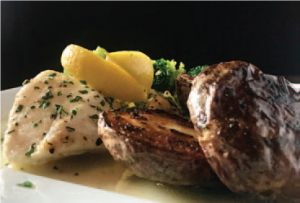 The Thirsty Turtle • Pork Tenderloin Special
The Thirsty Turtle • Pork Tenderloin Special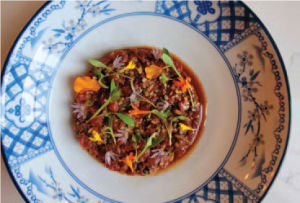 Common Lot • Wagyu Beef Tartar
Common Lot • Wagyu Beef Tartar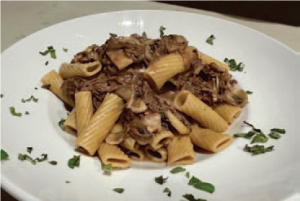 Trattoria Gian Marco • Short Rib Rigatoni
Trattoria Gian Marco • Short Rib Rigatoni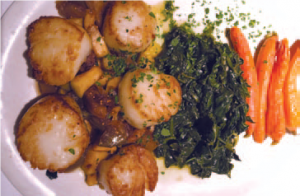 Limani Seafood Grill • Seared Sea Scallops
Limani Seafood Grill • Seared Sea Scallops
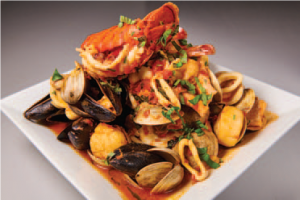
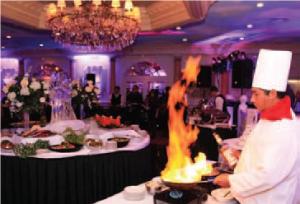
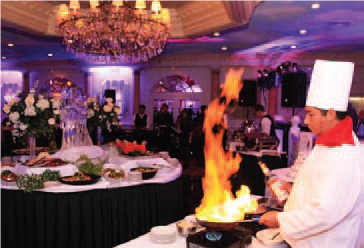
 Café in Brooklyn Heights, turned an old insurance agency into a restaurant in 2005. The city that too often had been associated with a prison took on new luster and a new (and desirable) distinction: dining destination. Then, in 2007, he
Café in Brooklyn Heights, turned an old insurance agency into a restaurant in 2005. The city that too often had been associated with a prison took on new luster and a new (and desirable) distinction: dining destination. Then, in 2007, he  opened Daryl Wine Bar & Restaurant in New Brunswick. This year, he’d also been spotted on KP duty up at Alice’s Restaurant at Lake Hopatcong. When a chef spreads his wings in ways other than through the menu at his eponymous restaurant, there can be cause to worry. No worries in Rahway. Restaurant David Drake’s chef de cuisine Peter Turso is technically skilled and culinarily gifted. But on this night, with Drake in the kitchen and then doing a post-dinner rush survey of dining rooms both upstairs and down in this posh, yet winsomely rustic setting, there’s a confidence that speaks of decades of experience in high-toned, high-pressure kitchens.
opened Daryl Wine Bar & Restaurant in New Brunswick. This year, he’d also been spotted on KP duty up at Alice’s Restaurant at Lake Hopatcong. When a chef spreads his wings in ways other than through the menu at his eponymous restaurant, there can be cause to worry. No worries in Rahway. Restaurant David Drake’s chef de cuisine Peter Turso is technically skilled and culinarily gifted. But on this night, with Drake in the kitchen and then doing a post-dinner rush survey of dining rooms both upstairs and down in this posh, yet winsomely rustic setting, there’s a confidence that speaks of decades of experience in high-toned, high-pressure kitchens.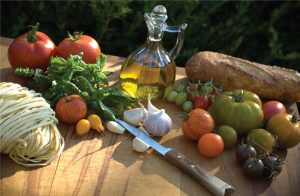 mysteriously minty and clovey, that makes the dish irresistible. Seconds? Gladly. Another irresistible accent partnership—the fool-proof combo of chanterelles and apricot puree—elevates slices of roasted duck breast, creamy white polenta and knobby baby turnips.
mysteriously minty and clovey, that makes the dish irresistible. Seconds? Gladly. Another irresistible accent partnership—the fool-proof combo of chanterelles and apricot puree—elevates slices of roasted duck breast, creamy white polenta and knobby baby turnips.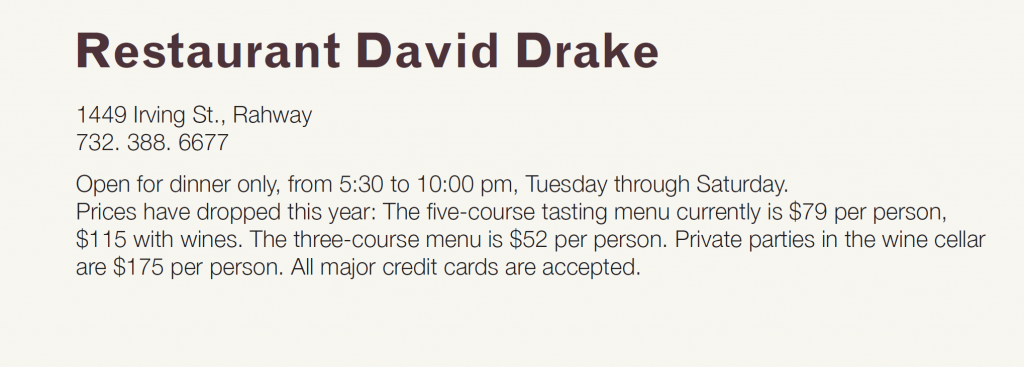

 mainstay in
mainstay in 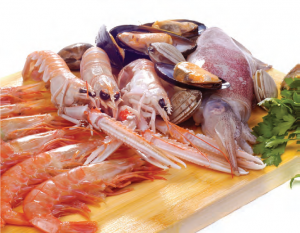 the kitchen of the venerable Frog & the Peach restaurant in New Brunswick. That’s where restaurateur Nick Borzone met her and decided to create a restaurant that would showcase her talents. Thus was born Lola, a hot-pot of Latin flavors accented with the young chef’s awareness of global trends and ingredients. Does it work? One look around the high-energy parlor of a dining room on an SRO weekend night tells you food and diners are clicking, big time. There are bountiful bowls of Brazilian fish stew, fat pork chops plated with a colorful pineapple-jalapeno salsa and cocktail glasses of ceviches going out to tables and, momentarily, stopping conversation. If folks in the area who knew this spot on Durham Avenue as the longtime home to a traditional Italian restaurant had their doubts when Lola opened a year ago, they don’t today. Lola is a firing-on-all-cylinders smash. That’s probably because Castagnetto has the gumption to turn garlic shrimp on its ear, taking a same-old, same-old starter and bumping up its flavor quotient with an infusion of warming, smoky-sweet guajillo chilies. She brushes baby pork ribs with mango and a mix of hot-woodsy spices, cooks them till they’re spoon-tender and elicits swoons from diners. This chef knows how to seduce. She pays homage to her South American heritage with empanadas that are basic and beautiful, such as the pockets of pastry filled with goat cheese and olives, or luxurious and alluring, such as the little bites stuffed with shreds of filet mignon.
the kitchen of the venerable Frog & the Peach restaurant in New Brunswick. That’s where restaurateur Nick Borzone met her and decided to create a restaurant that would showcase her talents. Thus was born Lola, a hot-pot of Latin flavors accented with the young chef’s awareness of global trends and ingredients. Does it work? One look around the high-energy parlor of a dining room on an SRO weekend night tells you food and diners are clicking, big time. There are bountiful bowls of Brazilian fish stew, fat pork chops plated with a colorful pineapple-jalapeno salsa and cocktail glasses of ceviches going out to tables and, momentarily, stopping conversation. If folks in the area who knew this spot on Durham Avenue as the longtime home to a traditional Italian restaurant had their doubts when Lola opened a year ago, they don’t today. Lola is a firing-on-all-cylinders smash. That’s probably because Castagnetto has the gumption to turn garlic shrimp on its ear, taking a same-old, same-old starter and bumping up its flavor quotient with an infusion of warming, smoky-sweet guajillo chilies. She brushes baby pork ribs with mango and a mix of hot-woodsy spices, cooks them till they’re spoon-tender and elicits swoons from diners. This chef knows how to seduce. She pays homage to her South American heritage with empanadas that are basic and beautiful, such as the pockets of pastry filled with goat cheese and olives, or luxurious and alluring, such as the little bites stuffed with shreds of filet mignon.



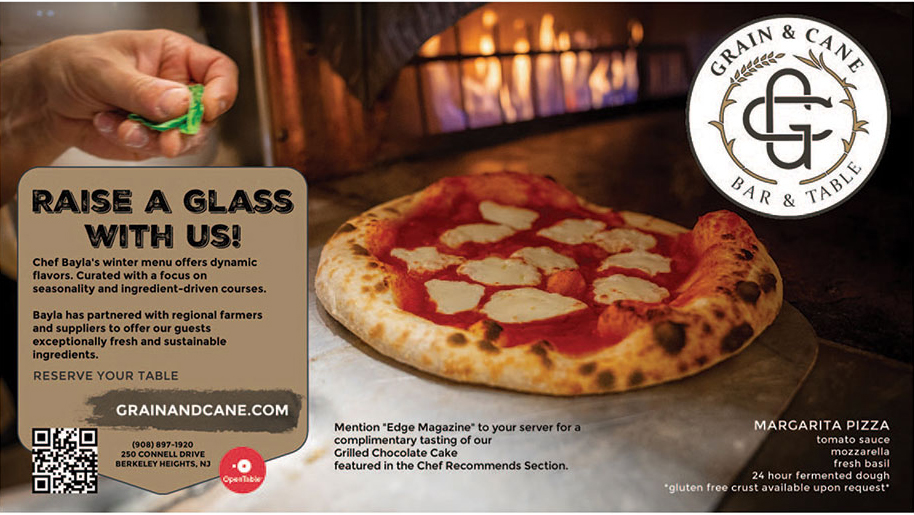



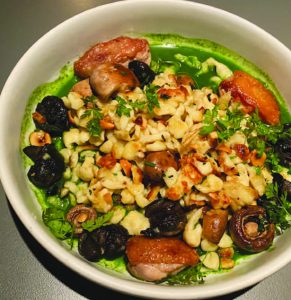



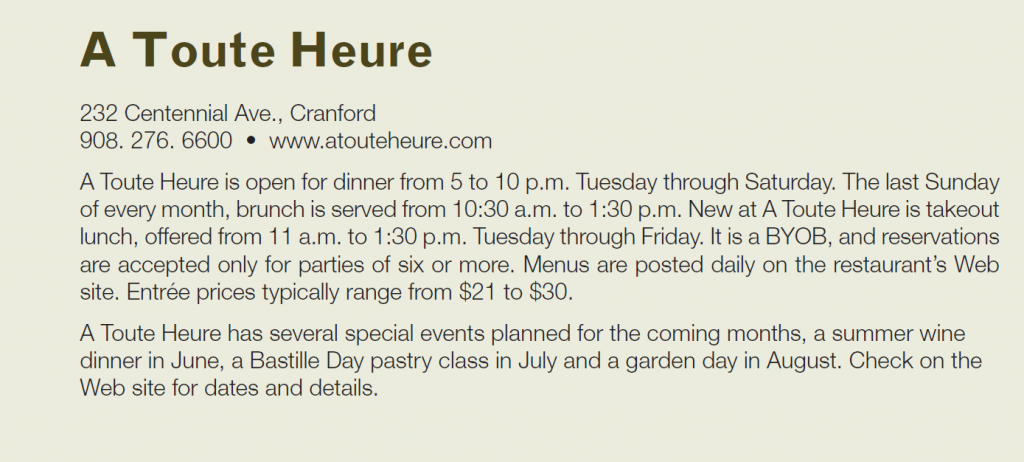
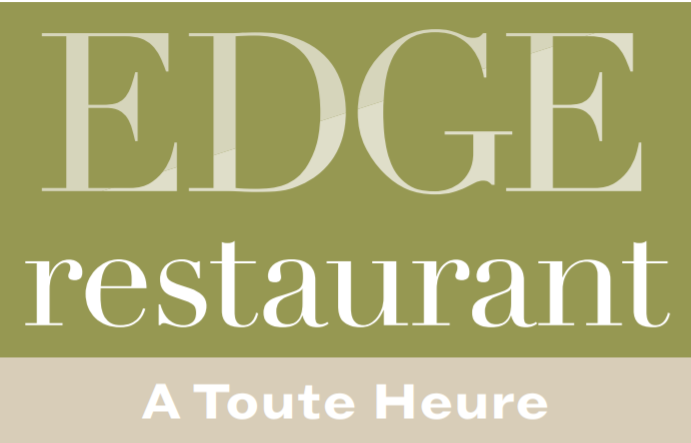
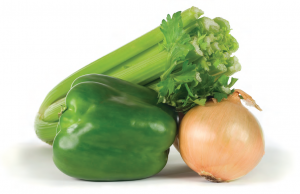 aristocratic than in Cajun fare. Cajun food usually has a kick to it but, contrary to popular belief, an authentically prepared Cajun dish does not involve eye-watering heat. Unless, of course, you specifically ask for it that way. If you’ve been to New Orleans and still can’t remember which is which, Antoine’s is Creole and K-Paul’s (Paul Prudhomme) is Cajun. Emeril does both.
aristocratic than in Cajun fare. Cajun food usually has a kick to it but, contrary to popular belief, an authentically prepared Cajun dish does not involve eye-watering heat. Unless, of course, you specifically ask for it that way. If you’ve been to New Orleans and still can’t remember which is which, Antoine’s is Creole and K-Paul’s (Paul Prudhomme) is Cajun. Emeril does both.
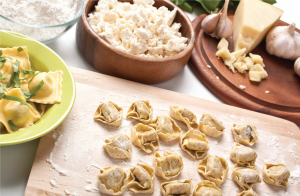 mble restaurant where local favorites are served. Frank Rizzo, chef-owner of The Italian Pantry Bistro, follows through on all the promises made in the restaurant’s name on his menu—in his cooking and in the attitude set forth in this small, near-Spartan storefront in downtown Cranford. “Comfort” may have become a gastronomic cliché, yet Rizzo and his crew disregard it as a sound-bite and wend their way around its possibilities with confidence and a smack of creativity. All that makes Italian Pantry a fun place to dig in to hearty grub. Which is why this BYOB is crowded from the ring of the dinner bell ’til last call from the kitchen. And why families, kids in tow, can be spotted doing early-shift eating—and couples catching a casual-dress date night knock wineglasses in twosomes and foursomes later on. For all its popularity in Union County, it flies under the radar of many of New Jersey’s restaurant groupies. That might be because it is devoted to the now-rather-passé Comfort Food category. Yet I’d bet a bite of sage-tinged French toast, in full fall regalia with the flavors of poached pear, red onion and a pungent blue cheese sauce, might tempt those trackers of trends. I know the baby-back ribs could stand against anything a destination barbecue shack in the South might be dishing up. You could rack up the clichés describing them—falling off the bone, licked with sauce neither too tart nor too sugared—but the point is the sincerity of the preparation. And, absolutely, the pert, moist, just-shy-of-sturdy cornbread served on the side. You could spend a lot of time wondering why you might never before have come across a sweet potato dumpling. Gently kneaded flour-water dough is plied into myriad shapes and stuffed with all manner of fillings the world over, but the marriage of petite fried turnover and mashed sweet potato is rare. It shouldn’t be. Especially if a swirl of chive oil is used as a spirited accent as it is here. Crunchy calamari with a tomato fondue reads like a signature dish for a restaurant called The Italian Pantry Bistro. But it was the weak link in the opening rounds, with too-tough squid giving off too much frying oil and a dipping sauce that needed to pack more of a spice punch. You’ll expect—and you’ll get—burgers, pizzas and pastas in this hometown-proud spot. But there’s always a twist, or a hint of something extra. It might be a “Buffalo”-style burger paying homage to that city’s famous Anchor Bar wings, slathered as it is with blue cheese. Or a beefy patty that’s another trip to the South, with Tennessee bacon, mushrooms, onions, Cheddar and a slap of that excellent house barbecue sauce. There’s a hint of truffle oil, a substance I usually dread, in the mix, but it’s a background note. Personal-size (jumbo personal-size, th
mble restaurant where local favorites are served. Frank Rizzo, chef-owner of The Italian Pantry Bistro, follows through on all the promises made in the restaurant’s name on his menu—in his cooking and in the attitude set forth in this small, near-Spartan storefront in downtown Cranford. “Comfort” may have become a gastronomic cliché, yet Rizzo and his crew disregard it as a sound-bite and wend their way around its possibilities with confidence and a smack of creativity. All that makes Italian Pantry a fun place to dig in to hearty grub. Which is why this BYOB is crowded from the ring of the dinner bell ’til last call from the kitchen. And why families, kids in tow, can be spotted doing early-shift eating—and couples catching a casual-dress date night knock wineglasses in twosomes and foursomes later on. For all its popularity in Union County, it flies under the radar of many of New Jersey’s restaurant groupies. That might be because it is devoted to the now-rather-passé Comfort Food category. Yet I’d bet a bite of sage-tinged French toast, in full fall regalia with the flavors of poached pear, red onion and a pungent blue cheese sauce, might tempt those trackers of trends. I know the baby-back ribs could stand against anything a destination barbecue shack in the South might be dishing up. You could rack up the clichés describing them—falling off the bone, licked with sauce neither too tart nor too sugared—but the point is the sincerity of the preparation. And, absolutely, the pert, moist, just-shy-of-sturdy cornbread served on the side. You could spend a lot of time wondering why you might never before have come across a sweet potato dumpling. Gently kneaded flour-water dough is plied into myriad shapes and stuffed with all manner of fillings the world over, but the marriage of petite fried turnover and mashed sweet potato is rare. It shouldn’t be. Especially if a swirl of chive oil is used as a spirited accent as it is here. Crunchy calamari with a tomato fondue reads like a signature dish for a restaurant called The Italian Pantry Bistro. But it was the weak link in the opening rounds, with too-tough squid giving off too much frying oil and a dipping sauce that needed to pack more of a spice punch. You’ll expect—and you’ll get—burgers, pizzas and pastas in this hometown-proud spot. But there’s always a twist, or a hint of something extra. It might be a “Buffalo”-style burger paying homage to that city’s famous Anchor Bar wings, slathered as it is with blue cheese. Or a beefy patty that’s another trip to the South, with Tennessee bacon, mushrooms, onions, Cheddar and a slap of that excellent house barbecue sauce. There’s a hint of truffle oil, a substance I usually dread, in the mix, but it’s a background note. Personal-size (jumbo personal-size, th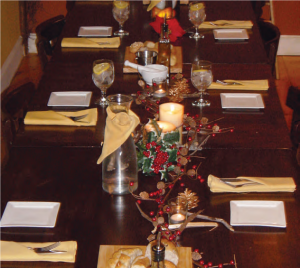 at is) pizzas (here, called pizzettas) aren’t the corner takeout kind. We took to the potato-onion-mascarpone pie, loving its charred crust and light-on-the-toppings style. I would’ve liked it even more with a more generous sprinkle of big-flake sea salt. Something to think about. That pizzetta offered a better use of the spud than the potato gnocchi, which weighed heavy in a terrific pumpkin beurre fondue sporting crispy fried sage leaves. That combo of high-fall pumpkin and butter has potential galore. You’ll see another riff on often-tired comfort fare in Rizzo’s chicken pot pie, which is topped with cornbread instead of either pastry or biscuit. It has all the usual suspects within (chicken chunks, mushrooms, peas, carrots) and a soothing gravy to bind it all together. Johnny Blue mussels, however, are anything but predictable. This season, the kitchen’s playing the pumpkin theme big, and it sets the bivalves in a startling sauce of pumpkin dotted with flecks of cranberries. It seems discordant at first, that swash of mildly sweet sauce with mussels, but there’s something funky and fun about the pairing. And the stand-up fries on the side don’t mind the frivolity. You guessed right: There’s a cupcake on the dessert menu. On this night, it’s a mini sweet potato number dressed in toasted marshmallow frosting. It’s fit for Thanksgiving. I had to laugh, eating one, as I imagined Rizzo and his kitchen team devising it as a spoof to all those marshmallow-topped sweet potato casseroles on holiday tables. Less satisfying was a baked apple dumpling that lacked substantial apple presence and seemed to try to compensate with too much walnut-raisin stuffing and a burst of butterscotch sauce. But a well-balanced poached pear crème brulée with a properly crusted top hit its stride, and the high mark for finales. The Italian Pantry Bistro is a neighborhood restaurant with a voice. It’s deliberately modest and humble, like many storefront BYOBs, but it doesn’t run with the pack by playing it safe with familiar dishes. No, instead, Italian Pantry spins comfort in a way that makes it impossible to take the genre for granted. EDGE
at is) pizzas (here, called pizzettas) aren’t the corner takeout kind. We took to the potato-onion-mascarpone pie, loving its charred crust and light-on-the-toppings style. I would’ve liked it even more with a more generous sprinkle of big-flake sea salt. Something to think about. That pizzetta offered a better use of the spud than the potato gnocchi, which weighed heavy in a terrific pumpkin beurre fondue sporting crispy fried sage leaves. That combo of high-fall pumpkin and butter has potential galore. You’ll see another riff on often-tired comfort fare in Rizzo’s chicken pot pie, which is topped with cornbread instead of either pastry or biscuit. It has all the usual suspects within (chicken chunks, mushrooms, peas, carrots) and a soothing gravy to bind it all together. Johnny Blue mussels, however, are anything but predictable. This season, the kitchen’s playing the pumpkin theme big, and it sets the bivalves in a startling sauce of pumpkin dotted with flecks of cranberries. It seems discordant at first, that swash of mildly sweet sauce with mussels, but there’s something funky and fun about the pairing. And the stand-up fries on the side don’t mind the frivolity. You guessed right: There’s a cupcake on the dessert menu. On this night, it’s a mini sweet potato number dressed in toasted marshmallow frosting. It’s fit for Thanksgiving. I had to laugh, eating one, as I imagined Rizzo and his kitchen team devising it as a spoof to all those marshmallow-topped sweet potato casseroles on holiday tables. Less satisfying was a baked apple dumpling that lacked substantial apple presence and seemed to try to compensate with too much walnut-raisin stuffing and a burst of butterscotch sauce. But a well-balanced poached pear crème brulée with a properly crusted top hit its stride, and the high mark for finales. The Italian Pantry Bistro is a neighborhood restaurant with a voice. It’s deliberately modest and humble, like many storefront BYOBs, but it doesn’t run with the pack by playing it safe with familiar dishes. No, instead, Italian Pantry spins comfort in a way that makes it impossible to take the genre for granted. EDGE 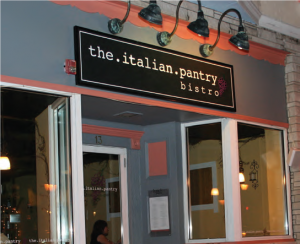 The Italian Pantry Bistro 13 Eastman St., Cranford 908.272.7790 Open from 11:30 a.m. to 9 p.m. Tuesday through Thursday, from 11:30 a.m. to 10 p.m. Friday and Saturday, and from 5 to 9 p.m. Sunday. Closed Mondays. Reservations accepted for Sunday, Tuesday through Thursday only; it’s first-come, first-served on Fridays and Saturdays. All major credit cards accepted. BYOB. Appetizers generally range from $8 to $14, burgers $13 to $14, pizzas from $9 to $14 and pastas $20 and up. Entrees are $22 to $32.
The Italian Pantry Bistro 13 Eastman St., Cranford 908.272.7790 Open from 11:30 a.m. to 9 p.m. Tuesday through Thursday, from 11:30 a.m. to 10 p.m. Friday and Saturday, and from 5 to 9 p.m. Sunday. Closed Mondays. Reservations accepted for Sunday, Tuesday through Thursday only; it’s first-come, first-served on Fridays and Saturdays. All major credit cards accepted. BYOB. Appetizers generally range from $8 to $14, burgers $13 to $14, pizzas from $9 to $14 and pastas $20 and up. Entrees are $22 to $32.
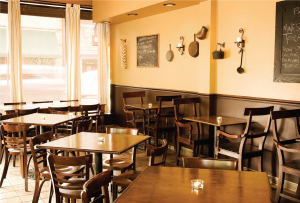 Seven forty-five on a Saturday night, and the show is about to begin. Regulars file into the corner storefront at Maplewood and Baker, settling into seats that almost seem assigned. There are nods of recognition, glances over to the fellow in charge, a sense of anticipation in not-sohushed exchanges. Corks pop. Wine glasses are filled and the floor crew at Arturo’s switches into high gear. At the rear of the intimate restaurant, chef/maestro Dan Richer already has warmed up his wood-burning oven by firing dozens and dozens of pizzas for the early-eating crowd. But right now, as the 8 o’clock hour approaches, he’s dispatching cups filled with husked cherries, also known as bush cherries. They’re nutty little fruits that look a bit like miniature tomatillos, but taste like nothing else on the planet. Peel back the papery skins, flick the fruit into your mouth and wonder how you’ll ever again eat another sugared peanut or mushy olive as a prelude to dinner. They’re the ideal starter for Richer’s unique show. It’s dinner theater, this ritualistic Saturday night minuet between chef and diner, a paean to all that’s locally grown and produced and catches the chef’s discerning eye. There’s no formal bill of fare on this night, just a procession of plates served forth with no fanfare and minimal explanation. It’s based on the trust Richer has built up between himself and his diners, folks who have warmed to the distinctive style of both the rustic, no-frills dining space and the man who delivers a spare, yet deeply satisfying dining experience. “Coppa, house-made,” is the way our server describes the next dish. He knows no embellishment is needed to sell diners on the veritable kaleidoscope made from cured pork shoulder and its fat, presented as delicate slices of salumi that appear air-brushed on the platter. Alone, or partnered with crusty, country bread, this coppa is pretty darn perfect. Actually, so is Arturo’s. Richer took over the old pizza joint in downtown Maplewood in early 2007 and re-made it to suit his dreams and palate. Pizzas are now of the modern age – that is to say, they go back in time to ovens fueled by wood, to crusts born of kneading and slow-rise techniques, to toppings that tilt toward Spartan, not extra-anything. A welledited selection of those thin-crust pizzas plus pastas are the order of the night five days a week, with Tuesdays turned over to a scaled-back tasting menu and Saturdays the destination-diner extravaganza. On that night, Richer goes strictly market and microseasonal. It’s completely, obsessively ingredient-driven in a good way. Ask about the olive oil, for instance, and you’ll be brought a bottle of the newest member of the Arturo’s Olive Oil Brigade, an unfiltered number from Puglia whose fruitiness makes already silky-sweet scallops even silkier and sweeter. These scallops are the star of Richer’s crudo, a bowl of dense and rich shellfish bathed in the Puglian oil
Seven forty-five on a Saturday night, and the show is about to begin. Regulars file into the corner storefront at Maplewood and Baker, settling into seats that almost seem assigned. There are nods of recognition, glances over to the fellow in charge, a sense of anticipation in not-sohushed exchanges. Corks pop. Wine glasses are filled and the floor crew at Arturo’s switches into high gear. At the rear of the intimate restaurant, chef/maestro Dan Richer already has warmed up his wood-burning oven by firing dozens and dozens of pizzas for the early-eating crowd. But right now, as the 8 o’clock hour approaches, he’s dispatching cups filled with husked cherries, also known as bush cherries. They’re nutty little fruits that look a bit like miniature tomatillos, but taste like nothing else on the planet. Peel back the papery skins, flick the fruit into your mouth and wonder how you’ll ever again eat another sugared peanut or mushy olive as a prelude to dinner. They’re the ideal starter for Richer’s unique show. It’s dinner theater, this ritualistic Saturday night minuet between chef and diner, a paean to all that’s locally grown and produced and catches the chef’s discerning eye. There’s no formal bill of fare on this night, just a procession of plates served forth with no fanfare and minimal explanation. It’s based on the trust Richer has built up between himself and his diners, folks who have warmed to the distinctive style of both the rustic, no-frills dining space and the man who delivers a spare, yet deeply satisfying dining experience. “Coppa, house-made,” is the way our server describes the next dish. He knows no embellishment is needed to sell diners on the veritable kaleidoscope made from cured pork shoulder and its fat, presented as delicate slices of salumi that appear air-brushed on the platter. Alone, or partnered with crusty, country bread, this coppa is pretty darn perfect. Actually, so is Arturo’s. Richer took over the old pizza joint in downtown Maplewood in early 2007 and re-made it to suit his dreams and palate. Pizzas are now of the modern age – that is to say, they go back in time to ovens fueled by wood, to crusts born of kneading and slow-rise techniques, to toppings that tilt toward Spartan, not extra-anything. A welledited selection of those thin-crust pizzas plus pastas are the order of the night five days a week, with Tuesdays turned over to a scaled-back tasting menu and Saturdays the destination-diner extravaganza. On that night, Richer goes strictly market and microseasonal. It’s completely, obsessively ingredient-driven in a good way. Ask about the olive oil, for instance, and you’ll be brought a bottle of the newest member of the Arturo’s Olive Oil Brigade, an unfiltered number from Puglia whose fruitiness makes already silky-sweet scallops even silkier and sweeter. These scallops are the star of Richer’s crudo, a bowl of dense and rich shellfish bathed in the Puglian oil  with needle-thin slivers of French breakfast radish that add color and bite to the raw-fish dish. There are a few twirls of baby greens—so tiny that they probably are better thought of as newborn greens—to add color and contrast, and that’s it. It’s gentle, it’s refined, it’s an exacting example of what this chef is trying to do: simplify, simplify, simplify. That’s his culinary style, and it’s both brave and smart. While others less secure in their métier, less confident of their skills, fuss and add a silly number of frills to a plate, Richer practices the art of the take-away. He pares down a dish to its fundamentals, letting his ingredients assume center stage. A salad of baby arugula, for instance, is accented by thin slices of peaches and flecks of shaved Parmigiano- Reggiano. That’s it. High-season tomatoes, both cheery Sun Golds and beefy San Marzanos, are chopped and set in a glass compote to be served only with a sprinkling of sea salt. The tomatoes’ own juices make it good to the last drop. Tagliolini, a thin-strand pasta, is too fresh, too creamy in taste and texture to need anything more than a handful of teeny cubes of zucchini and a little grated Parmigiano Reggiano. We all but bribed our server to admit to an infusion of cream or butter. No, we were told. Nothing but the fresh pasta, the zucchini, the Parmigiano-Reggiano. That’s what good pasta can do. And a good hunk of pork shank needs but a bed of earthy kale to keep it company. In northern states, it’s such an underappreciated partnership, anything pig and greens. In Richer’s hands, it could be the next big thing in Yankeeland. His whipped ricotta, served with raspberries and what possibly was a mirage of shaved dark chocolate, is precisely what dessert should be: neither overwhelmingly sweet nor baroque in scale. I would’ve had seconds had seconds been offered, however, since I’ve always dreamed of cheese and fruit being transformed into just this kind of finale. I left Arturo’s thinking that either I should 1) move to Maplewood or 2) convince Richer to take his show on the road to my hometown. I’ll further assess these options when I return to Arturo’s for the duck prosciutto, hazelnut-pear salad and pasta with wild boar ragu. For without a doubt, this food needs to be a regular part of my eating life. EDGE
with needle-thin slivers of French breakfast radish that add color and bite to the raw-fish dish. There are a few twirls of baby greens—so tiny that they probably are better thought of as newborn greens—to add color and contrast, and that’s it. It’s gentle, it’s refined, it’s an exacting example of what this chef is trying to do: simplify, simplify, simplify. That’s his culinary style, and it’s both brave and smart. While others less secure in their métier, less confident of their skills, fuss and add a silly number of frills to a plate, Richer practices the art of the take-away. He pares down a dish to its fundamentals, letting his ingredients assume center stage. A salad of baby arugula, for instance, is accented by thin slices of peaches and flecks of shaved Parmigiano- Reggiano. That’s it. High-season tomatoes, both cheery Sun Golds and beefy San Marzanos, are chopped and set in a glass compote to be served only with a sprinkling of sea salt. The tomatoes’ own juices make it good to the last drop. Tagliolini, a thin-strand pasta, is too fresh, too creamy in taste and texture to need anything more than a handful of teeny cubes of zucchini and a little grated Parmigiano Reggiano. We all but bribed our server to admit to an infusion of cream or butter. No, we were told. Nothing but the fresh pasta, the zucchini, the Parmigiano-Reggiano. That’s what good pasta can do. And a good hunk of pork shank needs but a bed of earthy kale to keep it company. In northern states, it’s such an underappreciated partnership, anything pig and greens. In Richer’s hands, it could be the next big thing in Yankeeland. His whipped ricotta, served with raspberries and what possibly was a mirage of shaved dark chocolate, is precisely what dessert should be: neither overwhelmingly sweet nor baroque in scale. I would’ve had seconds had seconds been offered, however, since I’ve always dreamed of cheese and fruit being transformed into just this kind of finale. I left Arturo’s thinking that either I should 1) move to Maplewood or 2) convince Richer to take his show on the road to my hometown. I’ll further assess these options when I return to Arturo’s for the duck prosciutto, hazelnut-pear salad and pasta with wild boar ragu. For without a doubt, this food needs to be a regular part of my eating life. EDGE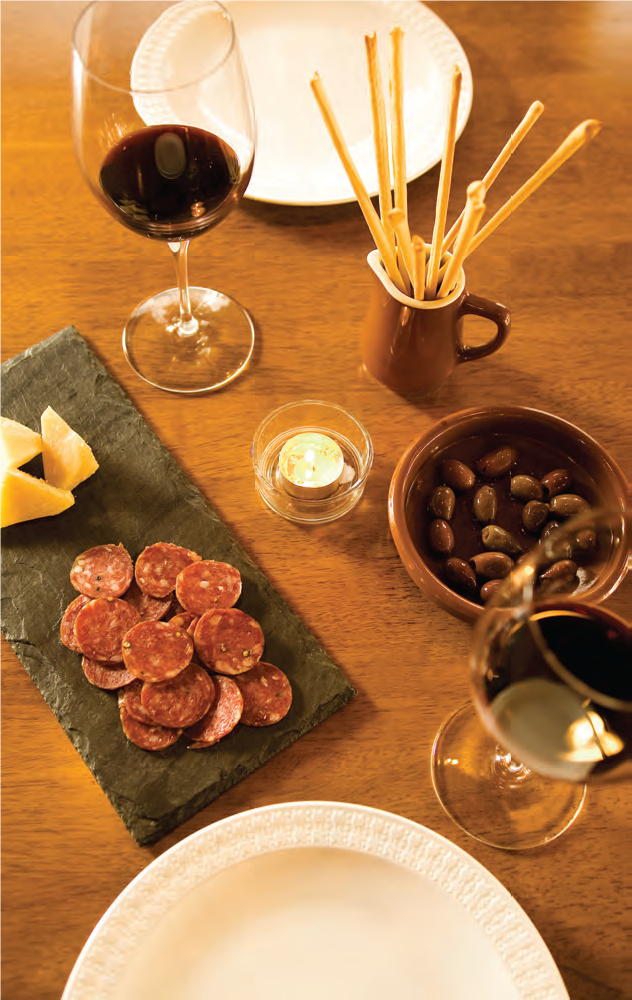
 “}e21`perch in the L-shaped first-floor dining room, a table for 10 catty-corner from ours is being readied for guests. Before long, on our other side, a few tables are being pushed together by the busy floor crew. I ask a server how many will be in that party. He shrugs and says, “Either 10 or 12. We’ll find out when they get here.” Party Central in Kenilworth. Boulevard Five72 is fit for celebrations and, on this weekend night, folks everywhere are toasting one another. Servers sashay around the dining spaces briskly and purposefully as the evening promises to crescendo every 15 minutes. Everyone and everything is dressed for the occasion. Approach the restaurant, which sits stately on the main thoroughfare that lends its name to Boulevard Five72, and you might think it looks something like a French chateau. Inside, there’s a bit of a French provincial feel to the décor, dominated by shades of beige and wood tones. It’s an appropriately restful backdrop to the constant-motion dining scene. Snag a bottle of wine from the list and settle in. Chef-partner Scott Snyder’s menu is amenable to almost anything you might be in the mood for. I’d suggest going for one of the value-priced red wines from Spain and letting it do-si-do with the fava bean ravioli nestled in a rustic rabbit ragout. It’s the standout dish on the menu of the moment at Boulevard Five72—a partnership of stalwarts from the south of France that have long earned their stripes at the table. Snyder finishes the starter with an ethereal pouf of truffle scented mascarpone that provides yet another flavor bridge from rabbit to fava to pasta. Or you might consider the crab cake, which here comes accompanied by a coarse chop of a salsa, starring chickpeas
“}e21`perch in the L-shaped first-floor dining room, a table for 10 catty-corner from ours is being readied for guests. Before long, on our other side, a few tables are being pushed together by the busy floor crew. I ask a server how many will be in that party. He shrugs and says, “Either 10 or 12. We’ll find out when they get here.” Party Central in Kenilworth. Boulevard Five72 is fit for celebrations and, on this weekend night, folks everywhere are toasting one another. Servers sashay around the dining spaces briskly and purposefully as the evening promises to crescendo every 15 minutes. Everyone and everything is dressed for the occasion. Approach the restaurant, which sits stately on the main thoroughfare that lends its name to Boulevard Five72, and you might think it looks something like a French chateau. Inside, there’s a bit of a French provincial feel to the décor, dominated by shades of beige and wood tones. It’s an appropriately restful backdrop to the constant-motion dining scene. Snag a bottle of wine from the list and settle in. Chef-partner Scott Snyder’s menu is amenable to almost anything you might be in the mood for. I’d suggest going for one of the value-priced red wines from Spain and letting it do-si-do with the fava bean ravioli nestled in a rustic rabbit ragout. It’s the standout dish on the menu of the moment at Boulevard Five72—a partnership of stalwarts from the south of France that have long earned their stripes at the table. Snyder finishes the starter with an ethereal pouf of truffle scented mascarpone that provides yet another flavor bridge from rabbit to fava to pasta. Or you might consider the crab cake, which here comes accompanied by a coarse chop of a salsa, starring chickpeas 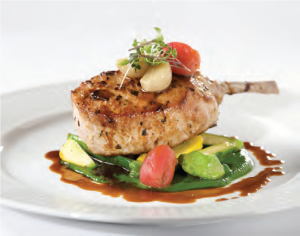 with a cameo of fruit. The punchline of the appetizer? A flash of sriracha sauce, moderated by avocado. As I ate, I thought there’d be nothing wrong with giving that hot-fun sriracha more of a chance to dance around the plate: Between the sweetness of the crab and the earthiness of the chickpeas, the dish has the foundation to stand up to more heat. Go for it. Shrimp punctuate a chunky corn chowder that benefits from a trio of compelling accents: smoky bacon, celery root and a touch of turnip. It’s a solid soup—one worth exploring all summer long—as Snyder and his kitchen crew riff on the shellfish and switch around the accenting vegetables to stay in season. One vegetable I wish they’d switch out is the red flannel hash that’s made from
with a cameo of fruit. The punchline of the appetizer? A flash of sriracha sauce, moderated by avocado. As I ate, I thought there’d be nothing wrong with giving that hot-fun sriracha more of a chance to dance around the plate: Between the sweetness of the crab and the earthiness of the chickpeas, the dish has the foundation to stand up to more heat. Go for it. Shrimp punctuate a chunky corn chowder that benefits from a trio of compelling accents: smoky bacon, celery root and a touch of turnip. It’s a solid soup—one worth exploring all summer long—as Snyder and his kitchen crew riff on the shellfish and switch around the accenting vegetables to stay in season. One vegetable I wish they’d switch out is the red flannel hash that’s made from 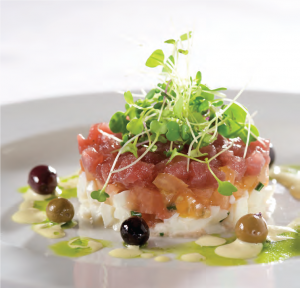 beets and plated with the grilled salmon. The grainy mustard and pesto-like spinach purée adds spot-on counterpoints to the moist fish, but the root vegetable clashes with the salmon. A basic strip loin, meanwhile, showed the kitchen’s precision, and the rich reduction of red wine swirled on the plate was all the steak needed. But a haystack of onions that looked more frizzled than frittered, as the menu described, proved an amiable companion, so we gobbled it all up. Why not? Steak and onions are a heavenly marriage. As are shellfish and arborio, the basis for Boulevard Five72’s risotto. It’s heavy on the truffle in its lobster broth, which I know draws applause from a multitude of
beets and plated with the grilled salmon. The grainy mustard and pesto-like spinach purée adds spot-on counterpoints to the moist fish, but the root vegetable clashes with the salmon. A basic strip loin, meanwhile, showed the kitchen’s precision, and the rich reduction of red wine swirled on the plate was all the steak needed. But a haystack of onions that looked more frizzled than frittered, as the menu described, proved an amiable companion, so we gobbled it all up. Why not? Steak and onions are a heavenly marriage. As are shellfish and arborio, the basis for Boulevard Five72’s risotto. It’s heavy on the truffle in its lobster broth, which I know draws applause from a multitude of 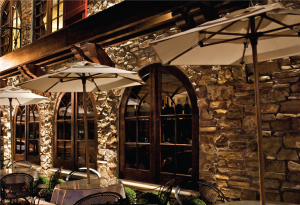 diners impressed by the presence of extreme luxury. I’m a little less drawn to the use of truffle oil than most; I think it overwhelms shellfish, in particular, keeping its unique character in the closet. We added character to our entrées in the form of two sides well worth the supplement. Spanish chips are one of the planet’s most enjoyable foods. Here the thick-cut potato slices are crisp and crunchy and judiciously dusted with pimenton and salt. Good greens are spiced just right—and right for just about any of Boulevard Five72’s entrées. My suggestion re the greens? Serve with a wedge of lemon to give diners the option of adding a little zing as desired. There’s citrus aplenty in the steamed pudding cake, an elegant finale served with a side of blackberry sorbet. An updated strawberry shortcake was underscored by a faint drop of balsamic vinegar and partnered with a creamy, subtle basil gelato. A favorite at my table was the dark chocolate-caramel tart, with its delightful sprinkling of fleur de sel and a cloud of mascarpone mousse offered as a finishing flourish. As we wound down our dinner, servers were gearing up for yet another large-party table. Amid all the activity, you might notice a slight slow-down between appetizers and main courses, and maybe your entrée plates are left to sit a tad too long after you’ve set down knife and fork. But the crew, largely, performs admirably. The crescendos continue at Boulevard Five72. EDGE
diners impressed by the presence of extreme luxury. I’m a little less drawn to the use of truffle oil than most; I think it overwhelms shellfish, in particular, keeping its unique character in the closet. We added character to our entrées in the form of two sides well worth the supplement. Spanish chips are one of the planet’s most enjoyable foods. Here the thick-cut potato slices are crisp and crunchy and judiciously dusted with pimenton and salt. Good greens are spiced just right—and right for just about any of Boulevard Five72’s entrées. My suggestion re the greens? Serve with a wedge of lemon to give diners the option of adding a little zing as desired. There’s citrus aplenty in the steamed pudding cake, an elegant finale served with a side of blackberry sorbet. An updated strawberry shortcake was underscored by a faint drop of balsamic vinegar and partnered with a creamy, subtle basil gelato. A favorite at my table was the dark chocolate-caramel tart, with its delightful sprinkling of fleur de sel and a cloud of mascarpone mousse offered as a finishing flourish. As we wound down our dinner, servers were gearing up for yet another large-party table. Amid all the activity, you might notice a slight slow-down between appetizers and main courses, and maybe your entrée plates are left to sit a tad too long after you’ve set down knife and fork. But the crew, largely, performs admirably. The crescendos continue at Boulevard Five72. EDGE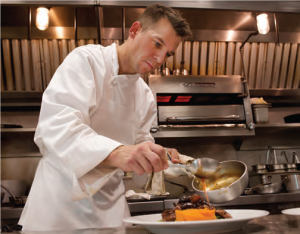
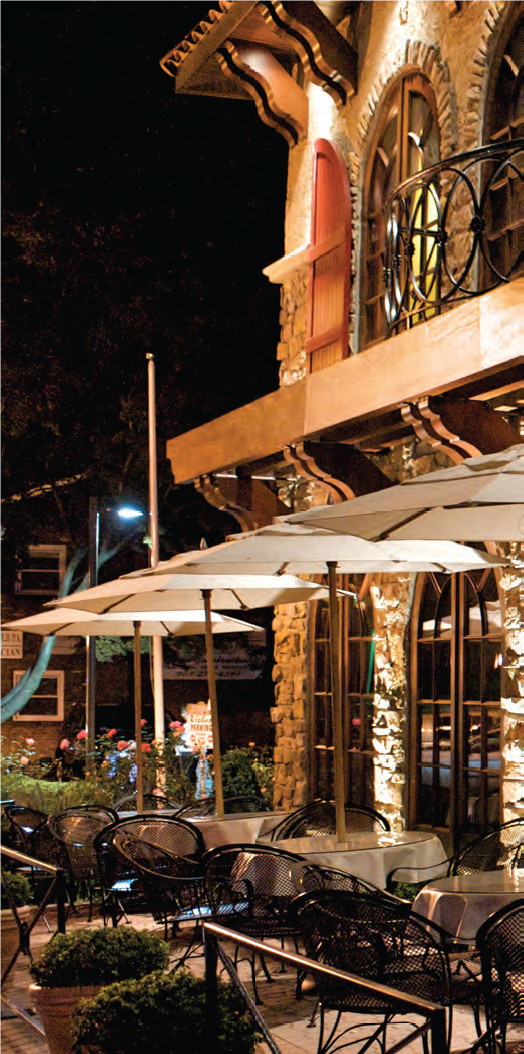
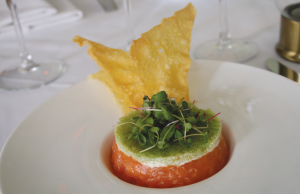
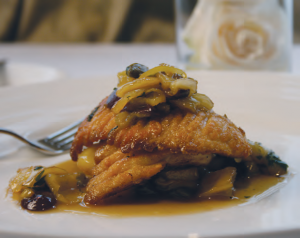
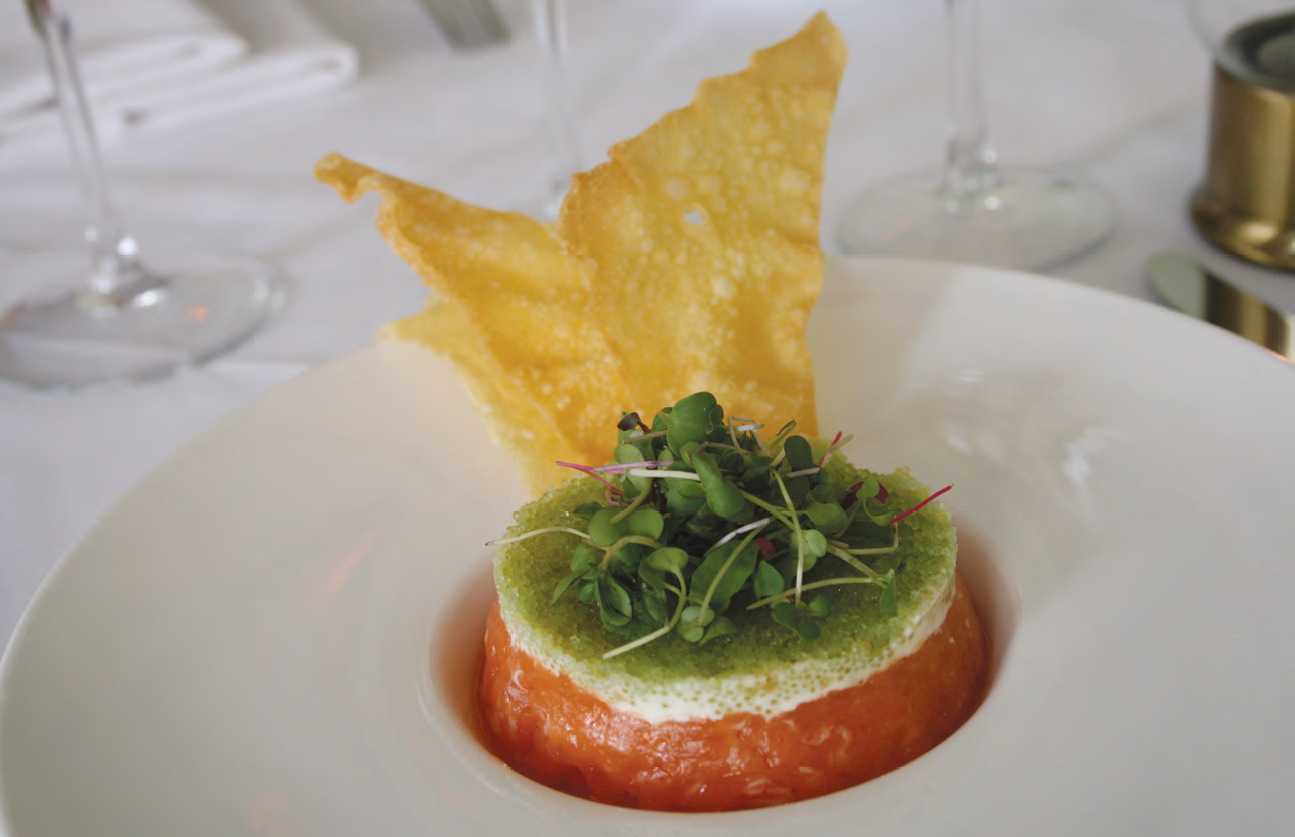
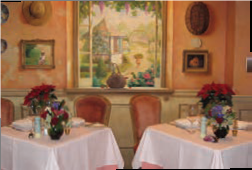
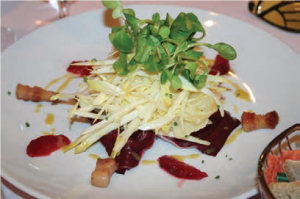
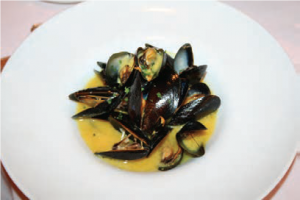
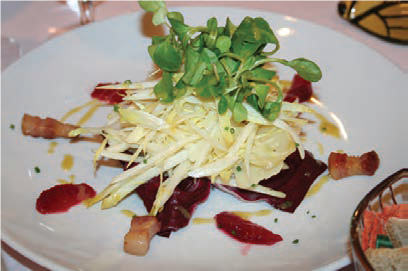
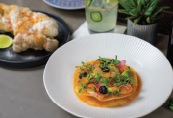 250 Connell Drive • BERKELEY HEIGHTS
250 Connell Drive • BERKELEY HEIGHTS 1-7 South Avenue W. • CRANFORD
1-7 South Avenue W. • CRANFORD 186 Columbia Turnpike • FLORHAM PARK
186 Columbia Turnpike • FLORHAM PARK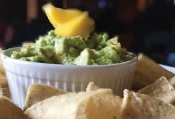 18 Washington Street • MORRISTOWN
18 Washington Street • MORRISTOWN 1230 Route 22 West • MOUNTAINSIDE
1230 Route 22 West • MOUNTAINSIDE 272 Route 22 West • SPRINGFIELD
272 Route 22 West • SPRINGFIELD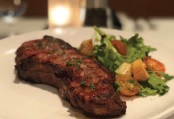 1075 Morris Avenue • UNION
1075 Morris Avenue • UNION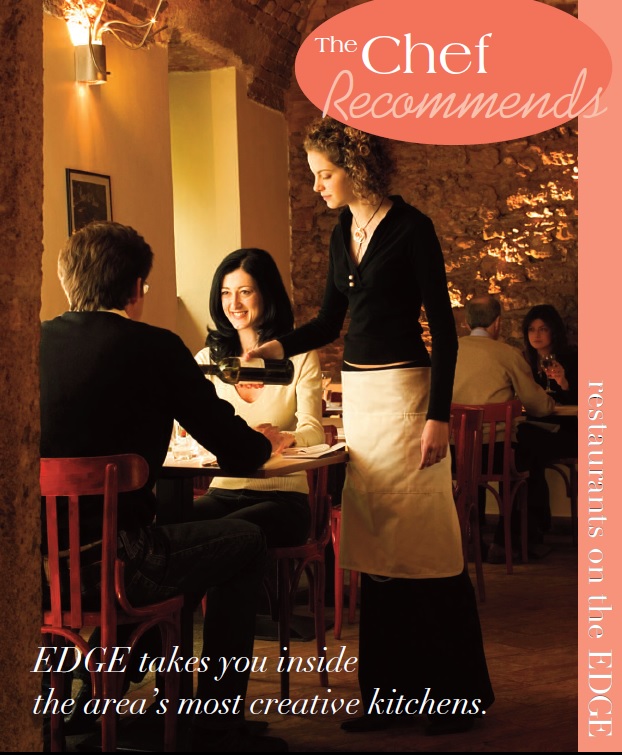

 “In pursuit of making great pizza,” Richer says, “I learned how to make great bread.”
“In pursuit of making great pizza,” Richer says, “I learned how to make great bread.” He is sitting in the dining room at Razza, where he has just finished shaping his dough into the now-iconic Razza shape that resembles a French batard. He glances over at the loaves, resting in individual linen-lined baskets. He consults with Octavio Gadea, who works with him on the bread. Then he continues.
He is sitting in the dining room at Razza, where he has just finished shaping his dough into the now-iconic Razza shape that resembles a French batard. He glances over at the loaves, resting in individual linen-lined baskets. He consults with Octavio Gadea, who works with him on the bread. Then he continues. Razza Right Now
Razza Right Now Let’s Eat
Let’s Eat

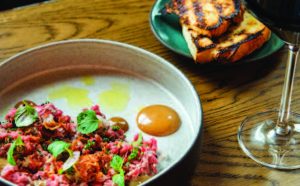 And so are the other five “smalls” we order to start our evening at Common Lot, a BYOB down the street from the venerable Papermill Playhouse, where Central Jersey
And so are the other five “smalls” we order to start our evening at Common Lot, a BYOB down the street from the venerable Papermill Playhouse, where Central Jersey  Why, I thought, haven’t I had plancha-seared shrimp like those served at Common Lot? Here, the kitchen
Why, I thought, haven’t I had plancha-seared shrimp like those served at Common Lot? Here, the kitchen  WINE TALK
WINE TALK “True voices in restaurants are in short supply. That is sad. Many diners don’t even know, let alone understand, what a voice in food is.”
“True voices in restaurants are in short supply. That is sad. Many diners don’t even know, let alone understand, what a voice in food is.”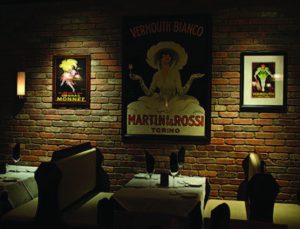 I recall reading Clydz’s press materials sent to me at The Asbury Park Press, where, at the time, I worked as the restaurant critic. What are these Clydz people thinking? I said to myself. They are not following the rules.
I recall reading Clydz’s press materials sent to me at The Asbury Park Press, where, at the time, I worked as the restaurant critic. What are these Clydz people thinking? I said to myself. They are not following the rules.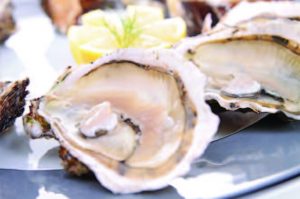
 I’ll rattle off a few of the favorites: Corpse Survivor II (Death’s Door, Lillet, Cointreau, absinthe, lemon juice; can anybody fill us in on the composition of Corpse Survivor the First?); French 55 (Champagne, Zubrowka, St. Germain, pineapple juice, lemon); Holiday Inn (strawberry-infused vodka, St. Germain, cucumber, lime); Cyn City (Hayman’s Old Tom, Cynar, lemon, simple syrup, mint, ginger beer); Jersey Sazerac (Laird’s Applejack, Pernod, maple bitters, simple syrup)…you get the idea. These Clydzians are into complicated.
I’ll rattle off a few of the favorites: Corpse Survivor II (Death’s Door, Lillet, Cointreau, absinthe, lemon juice; can anybody fill us in on the composition of Corpse Survivor the First?); French 55 (Champagne, Zubrowka, St. Germain, pineapple juice, lemon); Holiday Inn (strawberry-infused vodka, St. Germain, cucumber, lime); Cyn City (Hayman’s Old Tom, Cynar, lemon, simple syrup, mint, ginger beer); Jersey Sazerac (Laird’s Applejack, Pernod, maple bitters, simple syrup)…you get the idea. These Clydzians are into complicated.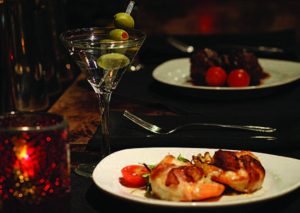 Anyway, speaking of rattling: The braised python ravioli starter cossets a fine-chop of the fillet speckled with arugula, all of which is ladled with a wild mushroom-infused cream sauce. Meatballs made with various ground game meats (boar, we’re told, dominates the day’s mix) are given a spray of a roasted tomato demi-glace that’s mild and relatively unseasoned. As I eat both the python ravioli and the meatballs, I’m thinking it’s pleasant. But I’m looking for the kind of thrill that comes from accents that understand the protein they’re meant to enhance. Not there. The roasted bone marrow, plated with shreds of pulled short rib, a dab of tomato jam and toasts rubbed with black garlic, is more properly mild. I yearn for a few spoonfuls of rich jus.
Anyway, speaking of rattling: The braised python ravioli starter cossets a fine-chop of the fillet speckled with arugula, all of which is ladled with a wild mushroom-infused cream sauce. Meatballs made with various ground game meats (boar, we’re told, dominates the day’s mix) are given a spray of a roasted tomato demi-glace that’s mild and relatively unseasoned. As I eat both the python ravioli and the meatballs, I’m thinking it’s pleasant. But I’m looking for the kind of thrill that comes from accents that understand the protein they’re meant to enhance. Not there. The roasted bone marrow, plated with shreds of pulled short rib, a dab of tomato jam and toasts rubbed with black garlic, is more properly mild. I yearn for a few spoonfuls of rich jus.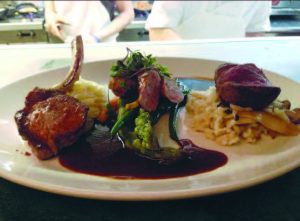 There’s always an entrée that offers a combo of game meats. On this night, it’s kangaroo, antelope and quail. Hesitant to try an exotic meat? Don’t be. The kangaroo and antelope were chicken-breast mild, with the quail notching the highest intensity of flavor on that plate. Probably the most “gamey” entrée of the night was the rosy loin of rabbit, plied as it was with a pert sun-dried tomato pesto that weighed in as refreshingly tart and plated with nutty quinoa, favas, carrots and sweet corn. Grilled bison hangar steak was served well by a red wine reduction and a spray of onions electrocuted into frizziness. The kitchen tosses a quail egg onto the plate as a game give-away. Seafood, anyone? Try the rice bowl, with trout and shrimp in the lead and a supporting cast of squiggles of egg, baby bok choy and dashi broth. Mild, once again, ruled. But it’s a comforting dish.
There’s always an entrée that offers a combo of game meats. On this night, it’s kangaroo, antelope and quail. Hesitant to try an exotic meat? Don’t be. The kangaroo and antelope were chicken-breast mild, with the quail notching the highest intensity of flavor on that plate. Probably the most “gamey” entrée of the night was the rosy loin of rabbit, plied as it was with a pert sun-dried tomato pesto that weighed in as refreshingly tart and plated with nutty quinoa, favas, carrots and sweet corn. Grilled bison hangar steak was served well by a red wine reduction and a spray of onions electrocuted into frizziness. The kitchen tosses a quail egg onto the plate as a game give-away. Seafood, anyone? Try the rice bowl, with trout and shrimp in the lead and a supporting cast of squiggles of egg, baby bok choy and dashi broth. Mild, once again, ruled. But it’s a comforting dish. Game off, I guess. Those first years of Clydz, back in a previous century, set standards for fun and game—quite literally. The people who came together here may well have shared a spirit of adventure that wasn’t offered by other establishments in New Jersey. Frankly, I wish Clydz would reconnect with its roots and the soul of its menu. Game is on the menu; it needs to be in the concepts and the cooking, too.
Game off, I guess. Those first years of Clydz, back in a previous century, set standards for fun and game—quite literally. The people who came together here may well have shared a spirit of adventure that wasn’t offered by other establishments in New Jersey. Frankly, I wish Clydz would reconnect with its roots and the soul of its menu. Game is on the menu; it needs to be in the concepts and the cooking, too.